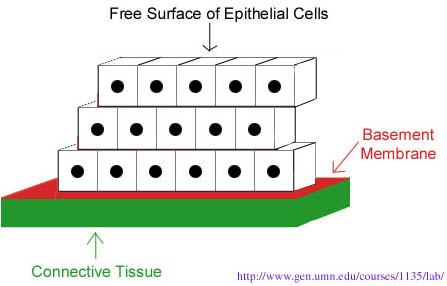Epithelia are classified on the basis of cell shape and arrangement. The cell shapes are columnar (column shaped cells), cuboidal (cube shaped cells), and squamous (scale-like cells).
Generally, the arrangements are simple and stratified. Simple epithelia have one layer of cells attached to a basement membrane. Stratified epithelia have two or more layers of cells attached to a basement membrane.
So, if you see a tissue that consists of a free surface, a single layer of "cube" shaped cells, and a basement membrane, then you have a simple cuboidal epithelium.

If you see a tissue with a free surface, three sheets of cuboidal cells, and a basement membrane, then you have a stratified cuboidal epithelium.

It is important to note that stratified epithelia are named according to the cells forming the free surface. So, if you see a tissue section that, going from deep to superficial, consists of a basement membrane, three layers of cuboidal cells, and ten layers of squamous cells, then you would have "stratified squamous epithelial tissue".
